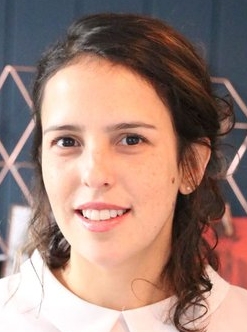This story is part of BREAKER’s Social Good Week, a series looking at ways blockchain technology can engineer progress and help humanity.
After graduating from the University of Cambridge in 2009, Neta Meidav started working at Ofgem, England’s regulatory department on gas and electricity. Not long later, she was sexually harassed by a senior employee.
Like the majority of victims, she decided against reporting it, out of fear of retribution and the damage it might do to her then-fledgling career. Meidav left her position soon after, burying the incident that would become part of the estimated 75 percent of workplace sexual misconduct cases that go unreported. “It was easier to leave than to report what happened. I was really afraid this powerful man would crush my career before I even started,” she said.
Though Meidav spent the next decade building a successful career in British government, the outpouring of allegations against Miramax co-founder Harvey Weinstein in October 2017 gave her pause. As the massive scale of his abuse unfolded, she felt compelled to support the #MeToo movement. Further, she felt she had the perfect tool to do so: blockchain.
In November 2017, Meidav launched Vault, a platform that uses a private blockchain to help employees anonymously track and report workplace misconduct confidentially. The service allows users to store information in a (theoretically) incorruptible digital ledger—ideal for reporting sensitive cases involving sexual assault and harassment.
“The industry we’re disrupting is the anonymous reporting hotline, which essentially hasn’t changed much since the 1970s,” says Neta Meidav.
Meitav describes the user experience of Vault like a digital journal for employees, where they can store notes and digital evidence—including personal memos, files, emails and photos—that exhibit misconduct. All records are uploaded with a permanent timestamp, and employers have no oversight over in-progress reports unless the employee decides to “open the vault” to human resources or a trusted manager.
“The industry we’re disrupting is the anonymous reporting hotline, which essentially hasn’t changed much since the 1970s,” she says. “At best, it turned into an online form or an app, but there’s something about anonymous reporting messaging that proves that it’s not delivering results.”
Vault is one of a handful of companies that are in beta stages of using blockchain to fight sexual assault and harassment, part of a rising global trend. For example, in an attempt to circumvent China’s rampant censorship on social media apps like Weibo and WeChat, users began sharing stories anonymously on the Ethereum blockchain. However, in October 2018, China’s Cyberspace Administration—which regulates the country’s digital content and use—proposed that users be forced to register with full names and identification numbers, to eradicate anonymous reporting.

While the fate of anonymous blockchain reporting in China remains to be seen, services like Meidav’s—as well as a recently launched crime-reporting tool called ZTips and a new app designed to fight assault on college campuses called Ciaspora—are turning to blockchains to increase rates of reporting.
ZTips helps users share crime tips to the Ethereum blockchain, but rather than keep the information private like Vault, it allows users to report misconduct directly to law enforcement agencies. Founder Opinder Prett Singh aims to help augment rates of reporting across a wide swath of crimes that are traditionally challenging to prosecute, such as sexual harassment, human trafficking, cybercrime, and corporate malfeasance.
“We have a major need for social impact use cases where customizable privacy, coupled with decentralized reporting systems, can act as a lifesaver for humanity and create a more secure society,” he wrote in an email from India, where he’s based.
On a smaller scale, apps like Ciaspora, created by three students at Texas A&M University, are looking to blockchain to help improve sexual assault reporting on college campuses.
Most sexual assaults on college campuses currently go unreported,” cofounder Princewill Imoukhome told The Battalion, the Texas A&M student newspaper. “Institutions or other powers are trying to push these things under the rug, so we want to open these things up so people know the full truth of what is going on in their communities.”
For Vault, part of what Meidav said sets it apart is a functionality that alerts users if others have filed information against the same individual, an effort to unearth repeat abusers. Once the repeat offender is identified, Vault offers “Go Together,” a strength-in-numbers feature that allows users to collectively report misconduct if they choose, while still concealing personal information from each other.
"This technology is a means to safeguard privileged information."
“The underlying problem is that reporting systems are fundamentally broken,” Meidav said. “Our technology can identify repeated patterns in the workplace and help employees come forward while giving employers a sense of the bad apples in the organization that might threaten people and the company.”
While the tamper-resistant nature of these blockchain-powered services seems conducive to handling sensitive misconduct cases, they will face competition from more traditional technology. One such app, The Silent Choir, is developing a closed and private network for victims of sexual assault and abuse to report. Launching a private beta mode beginning this February, it will also confidentially assist users in identifying perpetrators and consult on next steps.
Meidav supports all forms of reporting, though she says capturing indisputable records using blockchain could play a helpful role in assisting sexual assault and harassment cases that are often difficult to prove.
“This technology is a means to safeguard privileged information,” she said. “If you look at the future of work, we’re moving toward a world where work is democratized and employees are owners of their own data. In a far more digital workforce, this kind of solution would be at the very center of that workplace revolution.”